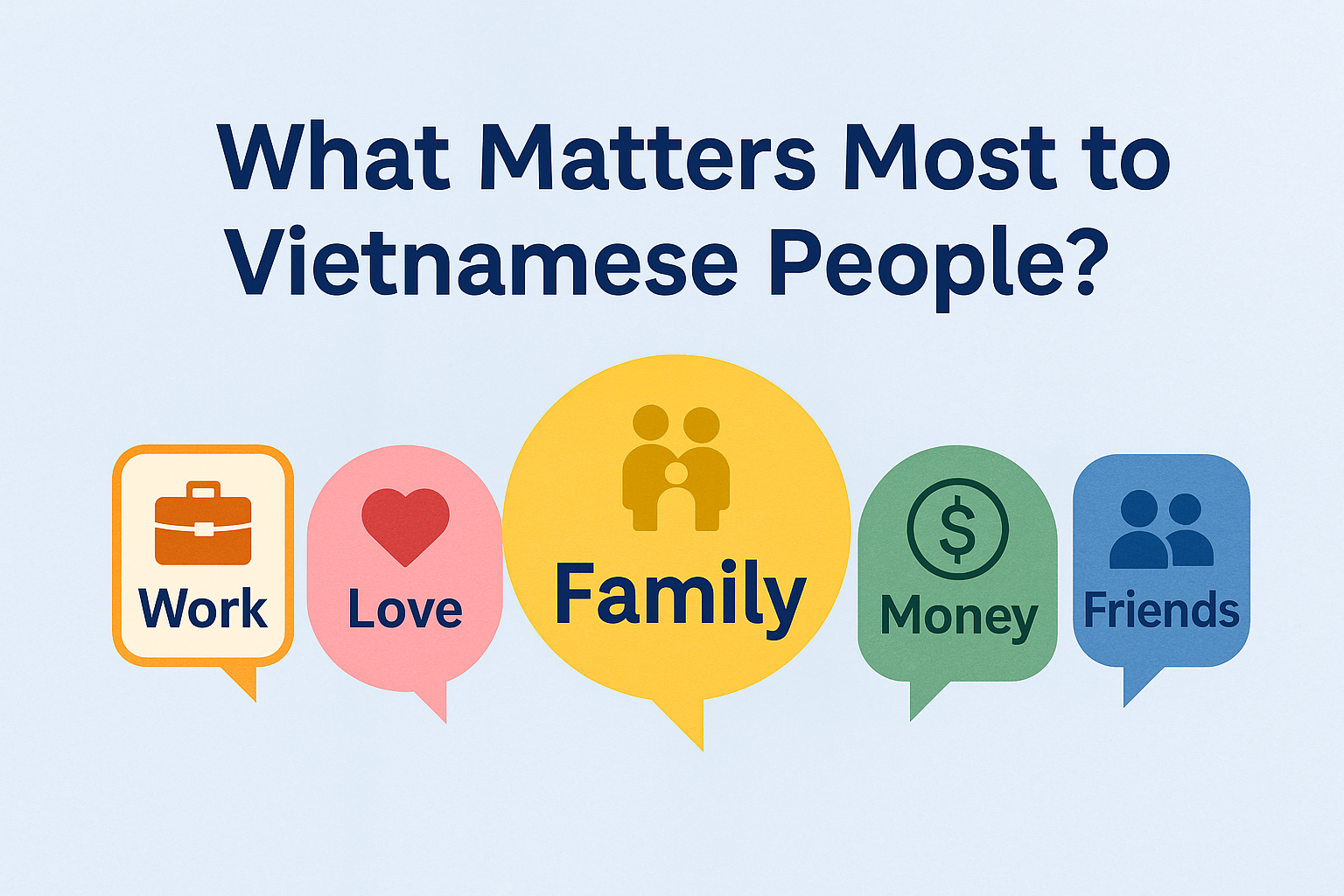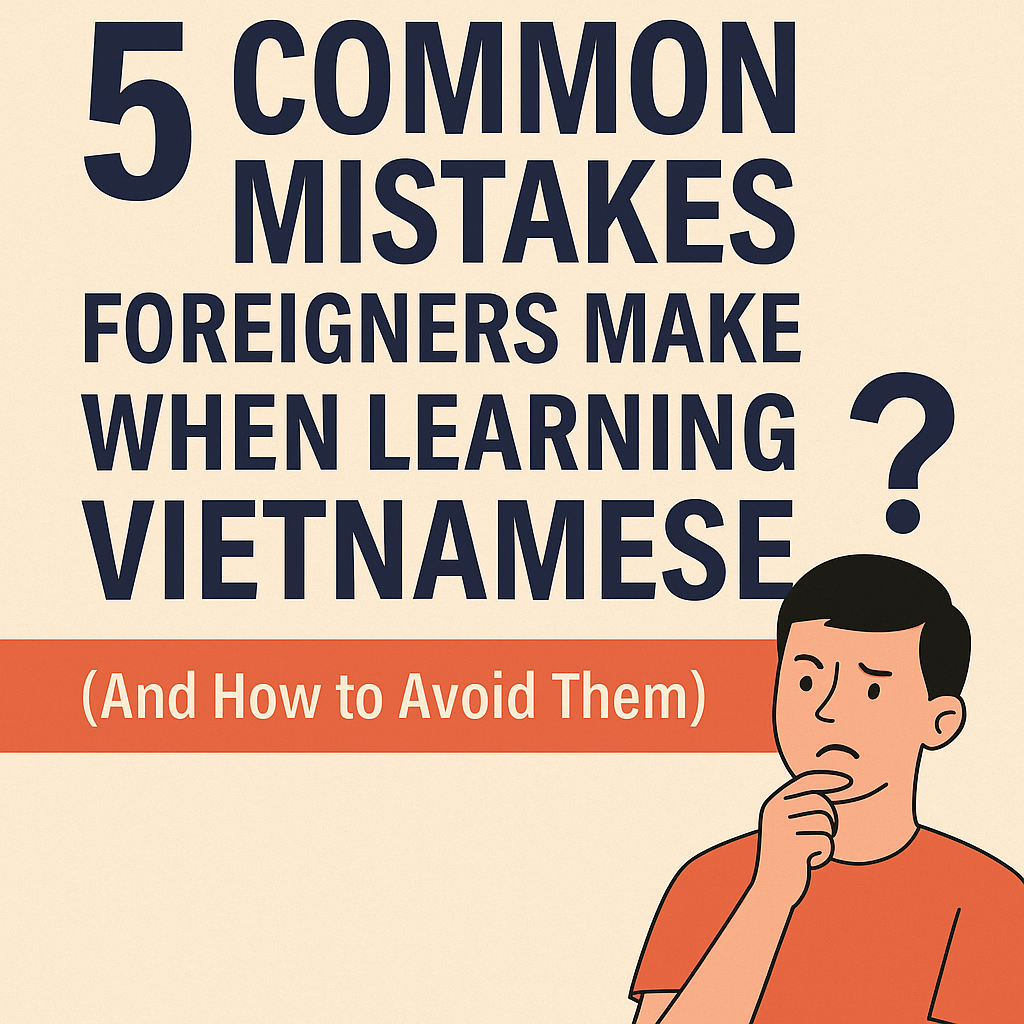How Hard Is Vietnamese for English Speakers?

If you’re wondering “Is Vietnamese hard to learn?”, you’re definitely not alone. Many English speakers ask this before starting their Vietnamese journey.
The truth is - Vietnamese can be challenging at first, but once you understand how it works, it becomes logical, simple, and even fun!
Let’s explore the Beginner, Intermediate, and Advanced levels and see what the difficulty of learning Vietnamese looks like in terms of Pronunciation, Vocabulary, and Grammar.
I. Beginner Level Difficulty of Learning Vietnamese
- Pronunciation: Hard
Vietnamese has six tones, while English has none! That means one word can change its meaning completely just by tone.
Example: Bố (father) vs. Bồ (lover).
But don’t worry — with practice and listening, you’ll start recognizing tones faster. - Vocabulary: Easy
Here’s some good news — Vietnamese uses the Latin alphabet, just like English!
No Chinese characters or Japanese scripts to memorize.
Words are usually short and easy to remember:
ăn = eat, đi = go, uống = drink
No verb conjugations, no plural endings, no gendered words.
“I go” → Tôi đi (no need for went or gone).
The only difference is word order: adjectives come after the noun.
Xe đẹp = “beautiful car”

Vietnamese pronunciation takes time, but vocabulary and grammar are simple for beginners!
II. Intermediate Level Difficulty of Learning Vietnamese
- Pronunciation: Easier (but new challenges appear)
By now, you’re familiar with tones and use them naturally in speech.
But then… new letters like ă, â, ê, đ, ư, ơ start to challenge you again!
Example: Tôi yêu em (I love you) vs. Tôi yêu êm (I love smoothness 😆) - Vocabulary: Harder
You’ll start noticing that some words look the same but have different meanings.
biển = sea / biển = sign
And there are so many small particles — nhé, đấy, thế, cơ, hóa ra — that don’t really translate into English.
They make Vietnamese sound natural, but they take time to master. - Grammar: Harder
Personal pronouns can be confusing even for advanced learners.
In English, you just say he or she, but in Vietnamese, there are many ways to say “he”: anh ấy, hắn, nó, gã, depending on who you’re talking about, your relationship, and even your tone!
Sentence structure also becomes trickier: - Em uống được bia (I can drink beer) vs Em được uống bia (I’m allowed to drink beer)

At this level, you can communicate, but you’ll start realizing that Vietnamese has its own rhythm, logic, and cultural depth.
III. Advanced Level Difficulty of Learning Vietnamese
- Pronunciation: Easy (but listening is the challenge!)
By now, you’ve mastered the tones and pronunciation. However, real conversations with native speakers can still be tough - they speak fast, drop words, and each region (North, Central, South) sounds like a different version of Vietnamese! - Vocabulary: Very Hard
Now you enter the world of idioms, slang, and expressions that only make sense if you understand Vietnamese culture.
Example: Chán như con gián (literally: “bored like a cockroach”) - Grammar: Even Harder
Advanced structures can completely change meaning with just one small word shift:
Tôi chỉ ăn cơm (I only eat rice)
Chỉ tôi ăn cơm (Only I eat rice)

You can speak naturally now, but full fluency means understanding humor, idioms, and how people actually think in Vietnamese.
So… Is Vietnamese Hard?
Yes, at the beginning it feels difficulty, especially the tones and pronunciation.
But once you get past that stage, you’ll realize Vietnamese grammar is actually very logical and consistent.
At iSpeak Vietlingo, we make your Vietnamese learning journey clear, practical, and cultural — so you can speak naturally, not just memorize rules.
Want to Learn Vietnamese with Ease?
Join our Free Trial Lesson and discover how fun Vietnamese can be!
Start Your Vietnamese Journey Today
Get your copy of 'Vietnamese with Ease' and begin mastering the Vietnamese language with confidence and cultural insight.
Order Your Copy Now



